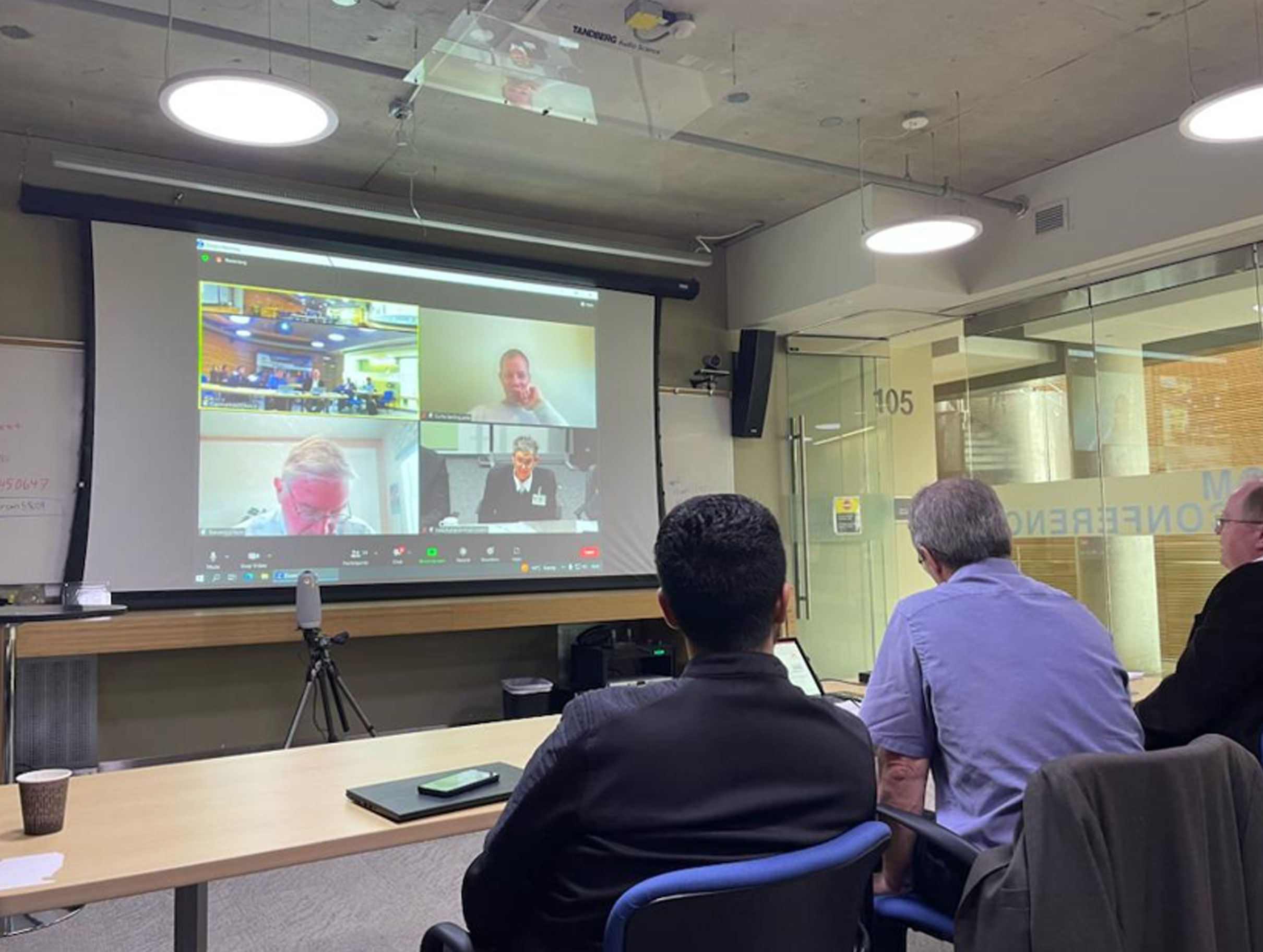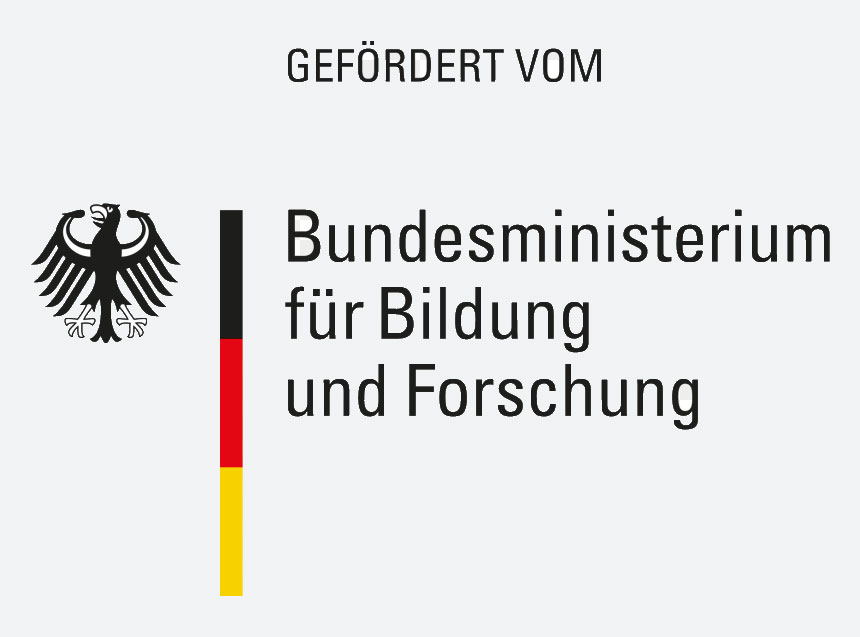Background
The German-Canadian Materials Acceleration Centre (GCMAC) is a bilateral alliance of research communities established in June 2021, co-led by Natural Resources Canada (NRCan) and Jülich Research Center– with support from the National Research Council Canada (NRCC) and the Karlsruhe Institute of Technology. The centre is funded directly by the German Federal Ministry of Education and Research (BMBF), with support from the Canadian government.
Harnessing the power of artificial intelligence, high performance computing, and robotic automation, GCMAC accelerates the discovery, design, and device integration of materials for sustainable energy, such as the production, use of clean hydrogen and Fuel cell technology. The GCMAC partnership aims to foster skills training, research exchange, and expertise sharing, thriving on access to world-class know-how and infrastructure within both countries and most recently, engage and partner with Industry for meaningful knowledge translation.
Successfully, GCMAC organized “Accelerated Materials Integration for Energy Applications”, a hybrid two-day Industry Days Event, on May 10th and 11th, 2023 in Hamilton, Ontario and Juelich, Germany
The objectives of industry days event were:
- To connect GCMAC, German and Canadian industries
- Form a better understanding about industry needs and opportunities for GCMAC technology adoption, and to further ensure that partners are well-supported by the event.
- To map and present the ecosystem of relevant industries along the value chain of energy materials industry
- An opportunity use this event to highlight a potential area of interest for industry (i.e. accelerated materials discovery) and lead them to options for engagement (incl. future funding calls for collaborative projects, one-on-one consulting, opportunities for PhD/Mitacs students etc.)
- To promote awareness on new opportunities available for career paths
Day 1 (Canada) – Link to Session Recording Here
Themes:
- Explaining Materials Acceleration Platforms
- What problems are suited to accelerated materials discovery?
- Ways the government can better support industry adoption of accelerated materials discovery
Key take-aways:
- The adoption of new technologies such as accelerated materials discovery methods and how they can help the industry solve tough technical problems to meet market/consumer needs, once clearly linked to the delivery of business value.
- Supporting successful, scaled implementation of new technology, as well as industry needs to de-risk the accelerated materials discovery approach through investment in infrastructure, expertise, and the development of like-minded international ecosystems
- Coordination between government and academia, via a hub of expertise, would convene actors to facilitate access to foundational MAPs expertise, such as, multi-scale modeling, AI, mechatronics, HPC, knowledge translation, IP, software development and equipment to support proof-of-concept demonstrations.
- Funding programs, such as those offered by Next Generation Manufacturing, NRC, Industrial Research Assistance Program, Materials for Clean Fuels Challenge Program, and ZIM are all aimed at supporting the industry and can be leveraged to support projects in the accelerated materials discovery space.
- Government funding programs and facility access need to be delivered in a timely manner to help, and not hinder the ever growing industry.
- Beyond providing funding to the industry, Natural Resources Canada and the National Research Council are developing capacity in the MAPs space in clean energy to support accelerated materials discovery in a non-duplicative manner.
Considerations would include a comprehensive IP or patent strategy in the accelerated materials discovery approach, as well as regulations for the final end product
Day 2 (Germany) – Link to Session Recording Here
Themes:
- Challenges and opportunities in accelerated materials discovery (AMD)
Key take-aways:
- Even when functions are carefully designed into materials – the introduction of interfaces and macro-scale phenomena when integrated into technology scale can disrupt or change material effectiveness.
- As a result, integrating descriptors for important characteristics at each scale for AI-based design for an overall optimized device and can obtain through modelling and characterization data.
- HTE perspective:
- Focusing on automating bottlenecks and customized parallelization and flexibility to ensure economic viability
- Improved facilitating of accelerated materials discovery by all labs. The strong need for infrastructure and data exchanges between many different labs, academic and industrial, as well as ontologies and standards which are tied into industry standards and best practises.
- General methods for AMD that can be transferred and applied by innovative researchers across multiple fields.
- Continuing to push policy makers to make them aware of potentialities of AMD, from the lab to industrial scales by providing them with data to inform decision making
- Encouraging open science and enabling access for all to the AMD approach while recognizing the importance of teamwork and avoiding the need for NDAs at low TRLs.
- Publishing process in research is merit based, and only success stories are usually shared. This demonstrates the need to track implicit knowledge, as supported by automated data collection to discover hidden parameters.
- Although,robots support reproducibility, there can be mechanical hysteresis in components.
- A good ROI and KPIs are crucial when evaluating new approaches for adoption by the industry.
- Circularity (LCA) is becoming a major focus in the development of new materials, there are a few approaches to consider:
- Cradle to Cradle/Life cycle – new materials designed from the beginning for recyclability
- Difficult to try to integrate afterwards
- New processes to recycle existing materials
- AMD can address circularity as well as TCA considerations through multi-objective optimization
- Policy makers can enforce this through innovative policies in funding
- In the scale-up of automated approaches – suppliers are often the ones to push new methods in the Industry
- Researchers must find optimal solutions in automated platform development to either integrate specialized automated equipment directly which is difficult depending on willingness of providers to share communication protocols, or through collaborative multi-access robots via optical interfaces.
- The Importance of standardized test protocols, equipment and standardized system integrators, benchmarking for the AMD approach.
- Canada will become an associate partner for Horizon EU, and that creates more opportunities for knowledge transfer between Germany and Canada that will emerge in 2024.
- However, strong need for dedicated funding for AMD approach development and adoption to solve many problems beyond piecemeal platform projects.
- In this context – it is clear that GCMAC is well-equipped to facilitate AI-supported experimentation .




